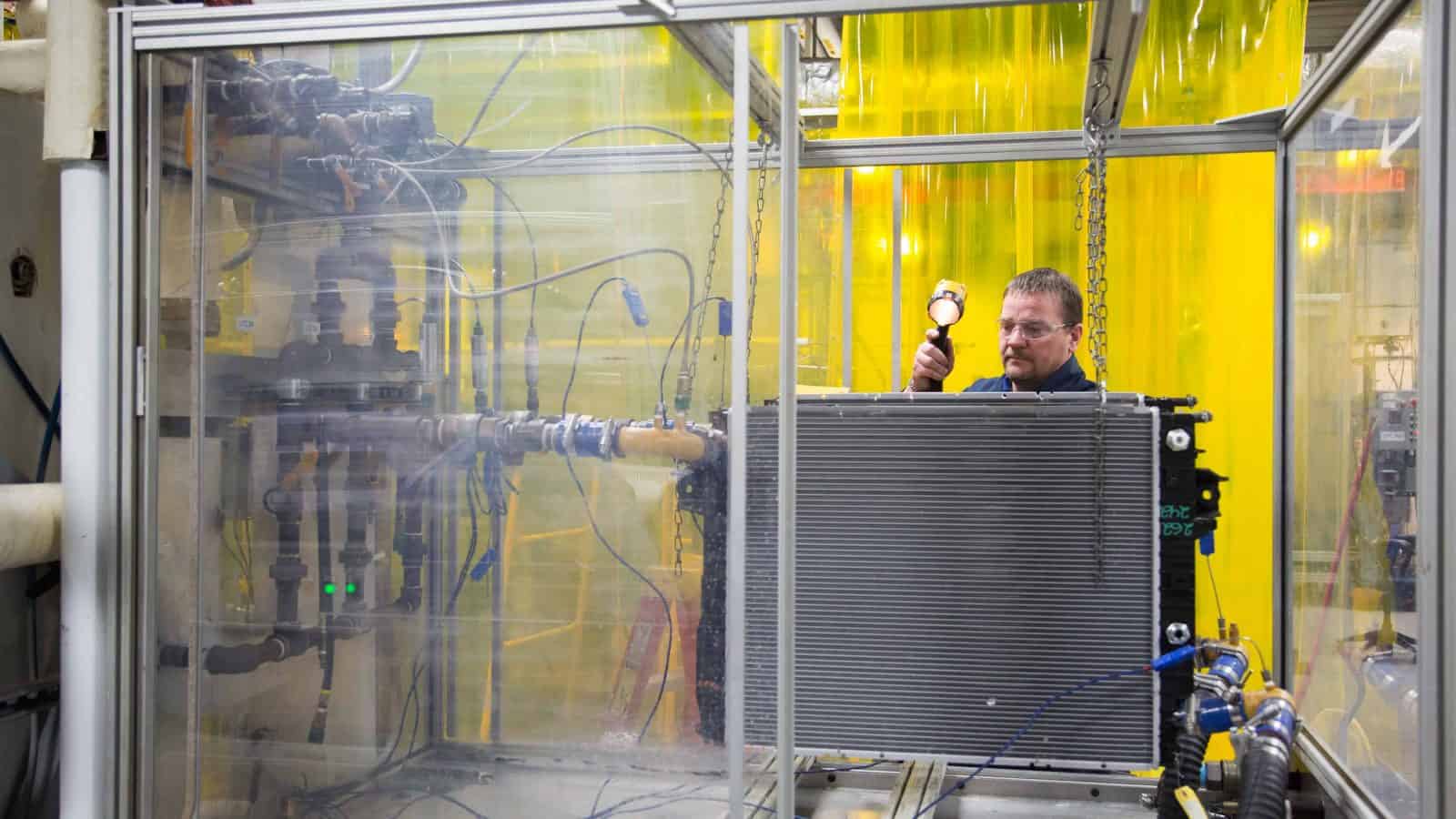Biden Drilling Ban Sets U.S. Back

The Biden administration’s ban on new offshore oil and gas drilling in most American coastal waters “sets a bad precedent for the country,” the NAM said Monday.
What’s going on: The decision, which comes just two weeks before President Trump takes office, applies to “new drilling off the entire East Coast, as well as California, Oregon and Washington state” and “some drilling off Alaska’s coast in portions of the Northern Bering Sea and in the eastern Gulf of Mexico” (The Hill).
- Though there is currently no active drilling in the Atlantic and most U.S. offshore oil and gas production comes from the central and western Gulf of Mexico, the area placed under the ban is the largest ever “formally taken off the table for drilling by a president.”
- In response, President Trump on Monday said he would “unban it immediately” (Associated Press).
Why it’s a problem: The moratorium could prove harder for Trump to undo than other 11th-hour moves by Biden. That’s in large part because of the Outer Continental Shelf Lands Act, which gives U.S. presidents the right to block drilling in certain areas but not the right to reinstate it.
- However, Congress could work with the new president to undo the move—and it should, Timmons said. “Manufacturers are committed to working with Congress and [President Trump] to scale back this harmful decision that undermines American energy dominance.”
Hydrogen Announcement Sets the Stage for American Energy Leadership
Washington, D.C. – Following the publication of new final guidance by the U.S. Department of Treasury for the hydrogen production tax credit, National Association of Manufacturers President and CEO Jay Timmons released the following statement:
“America leads when we unleash all our energy potential, including hydrogen, American natural gas, nuclear and more. With a strong build-out of hydrogen production facilities, we will be able to add more sources of reliable energy for manufacturers, power plants and communities while cementing our energy dominance.
“The NAM has advocated consistently for flexibility in the credit using project-specific emissions data rather than national or regional averages. The Biden administration’s guidance provides manufacturers with an important step forward. But for hydrogen to truly become a game-changing energy source, we need to address restrictions that make it harder to cost-compete on a global scale. A robust and flexible hydrogen industry will also be a major boon to the production and utilization of American natural gas as well as American nuclear power.
“Under President Donald Trump’s leadership, we have an opportunity to cut taxes, slash red tape and unleash permitting reform—turning this credit into a powerful tool for American energy leadership and fuel security. It’s time to build on this momentum and ensure these incentives deliver on their full promise for America’s manufacturers, workers and economy.”
-NAM-
The National Association of Manufacturers is the largest manufacturing association in the United States, representing small and large manufacturers in every industrial sector and in all 50 states. Manufacturing employs nearly 13 million men and women, contributes $2.91 trillion to the U.S. economy annually and accounts for 53% of private-sector research and development. The NAM is the powerful voice of the manufacturing community and the leading advocate for a policy agenda that helps manufacturers compete in the global economy and create jobs across the United States. For more information about the NAM or to follow us on Twitter and Facebook, please visit www.nam.org.
DOE LNG Study Misses the Mark
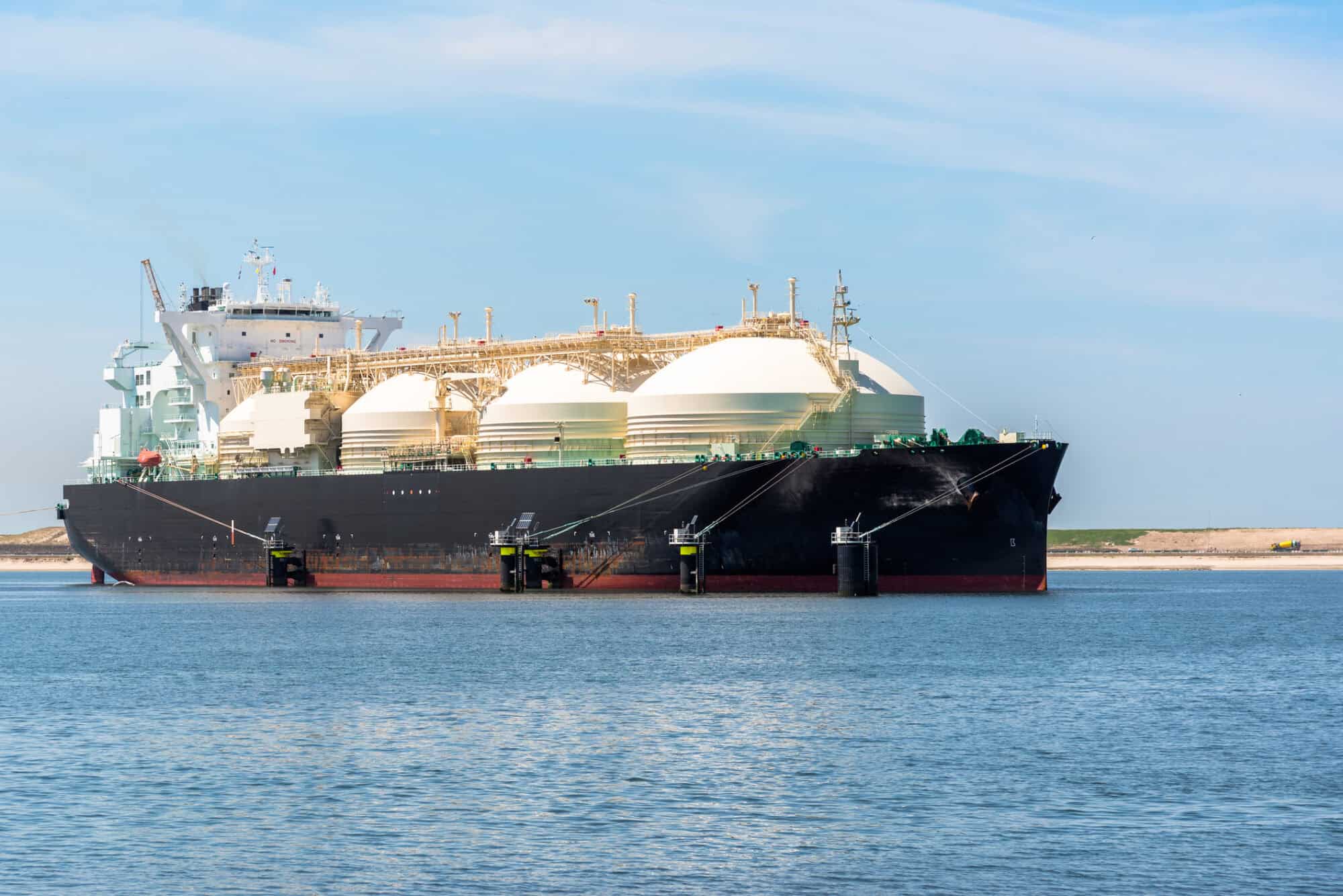
The NAM is urging President Trump to reconsider the Biden administration’s misguided findings regarding new liquefied natural gas export permits, following the release of a Department of Energy study claiming that increased permit numbers would have negative effects on the nation.
What’s going on: The Department of Energy’s analysis, released Tuesday, holds “that ‘unfettered’ shipments of the fuel would make domestic prices rise … [and would] displace more renewables” (E&E News).
- However, the “report from Energy Secretary Jennifer Granholm is clearly a politically motivated document designed for an audience who believes no form of carbon-based energy is acceptable,” NAM President and CEO Jay Timmons said. “LNG exports play a crucial role in reducing emissions by providing cleaner energy alternatives to countries reliant on higher emission sources.”
What the ban’s done: The result of the Biden administration’s moratorium—issued in January—on the issuance of new U.S. LNG export permits has been “chilled energy investment, costing the country manufacturing jobs and holding us back from achieving energy dominance on the world stage,” Timmons continued.
- “The DOE’s report claims to be concerned about security, but the actions of this administration on LNG only serve to incentivize Europe to purchase natural gas from Russia.”
A popular, key energy source: U.S. LNG is far cleaner than Russian LNG (House Energy and Commerce Committee). Furthermore, an October study by the NAM and PwC found that U.S. LNG is a significant and crucial contributor to gross domestic product, as well as an important source of jobs and federal, state and local taxes.
- What’s more, Americans want to keep exporting it. In a March NAM poll of 1,000 registered voters, more than 87% said they believe the U.S. should continue to export LNG.
The bottom line: “The data is clear: LNG exports are a driving force for economic growth and job creation in the United States,” Timmons concluded. “Halting LNG export licenses as suggested would threaten nearly a million jobs and undermine our nation’s economic stability. The NAM asks President Trump to end this political war on the energy manufacturers that power our economy, fuel job growth and help ensure America’s national security.”
DOE’s Politically Motivated LNG Report Undermines American Energy Dominance
President Trump Must End the Biden Administration’s War on Energy
Washington, D.C. – The National Association of Manufacturers today responded to the Department of Energy’s report on liquefied natural gas exports and highlighted the harmful impact of the DOE’s misguided attempts to restrict new LNG export terminals.
A comprehensive study conducted by the NAM, in collaboration with PwC, reveals that robust LNG export operations could support more than 900,000 jobs, contribute up to $216 billion to U.S. GDP and generate $46 billion in tax revenue by 2044. Furthermore, the LNG sector supports approximately 222,450 jobs, resulting in $23.2 billion in labor income, and contributes $43.8 billion to the national GDP.
“Today’s report from Energy Secretary Jennifer Granholm is clearly a politically motivated document designed for an audience who believes no form of carbon-based energy is acceptable. LNG exports play a crucial role in reducing emissions by providing cleaner energy alternatives to countries reliant on higher emission sources,” said NAM President and CEO Jay Timmons.
“The result of the LNG export ban that has been in place since January is chilled energy investment, costing the country manufacturing jobs and holding us back from achieving energy dominance on the world stage. The DOE’s report claims to be concerned about security, but the actions of this administration on LNG only serve to incentivize Europe to purchase natural gas from Russia.
“The data is clear: LNG exports are a driving force for economic growth and job creation in the United States. Halting LNG export licenses as suggested would threaten nearly a million jobs and undermine our nation’s economic stability. The NAM asks President Trump to end this political war on the energy manufacturers that power our economy, fuel job growth and help ensure America’s national security.”
-NAM-
The National Association of Manufacturers is the largest manufacturing association in the United States, representing small and large manufacturers in every industrial sector and in all 50 states. Manufacturing employs nearly 13 million men and women, contributes $2.91 trillion to the U.S. economy annually and accounts for 53% of private-sector research and development. The NAM is the powerful voice of the manufacturing community and the leading advocate for a policy agenda that helps manufacturers compete in the global economy and create jobs across the United States. For more information about the NAM or to follow us on Twitter and Facebook, please visit www.nam.org
NAM to EPA: Revise October PFAS Rule
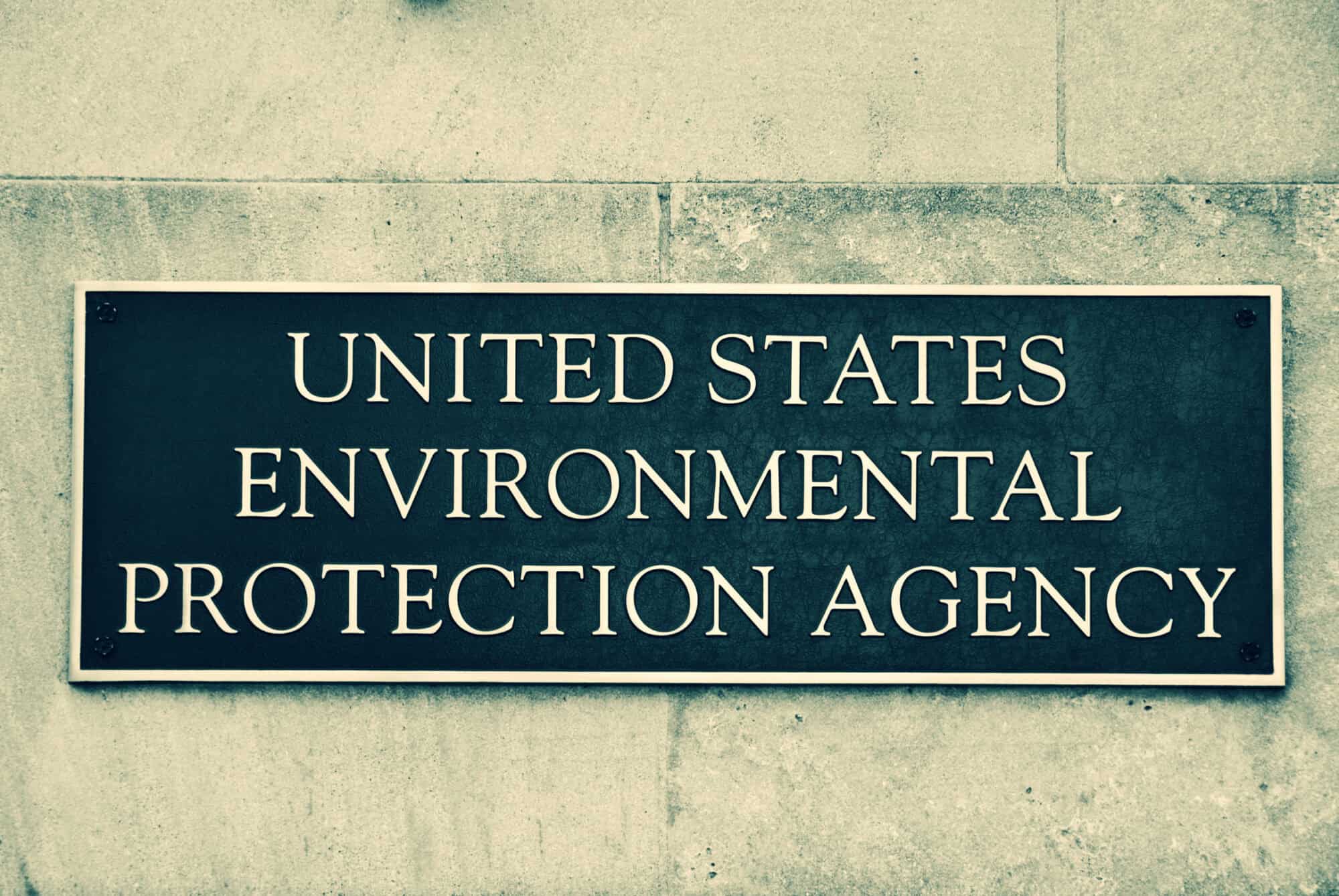
In its current form, the Environmental Protection Agency’s recent proposal to add specific per- and polyfluoroalkyl substances and PFAS categories to a database of toxic chemicals would place an unnecessary hardship on manufacturers, the NAM told the agency recently.
What’s going on: In October, the EPA published draft rules that would add 16 individual PFAS and 15 PFAS categories representing more than 100 individual PFAS to its Toxic Release Inventory, a list of potentially hazardous chemical release and waste management activities taking place in the U.S.
- Companies producing or manufacturing products with chemistries added to the TRI are required to complete and submit inventory forms each year for the chemicals they make and use over established limits.
- “The NAM believes this proposed rule will create unduly burdensome compliance requirements and increase costs for manufacturers and consumers as written,” NAM Vice President of Domestic Policy Chris Phalen said this month.
What should happen: The EPA should “adopt the following approaches to the proposed rulemaking”:
- Stay the proposal to give the public more time to comment on it.
- Revise the proposed PFAS and PFAS category additions to reflect “a meaningful baseline of scientific evidence” and ensure that “the scientific evidence justifying the listing[s] [is] supported by peer review and public comment.”
- List individually every PFAS added to the TRI and make each one identifiable.
- Narrow the group of PFAS listed as “chemicals of special concern” to reflect the scope of authority granted to the EPA by the fiscal year 2020 National Defense Authorization Act.
Why it’s important: “While the EPA estimates this proposed rule would result in up to 1,110 TRI reporting forms annually at an estimated cost of up to $6.6 million for its first year and up to $3.1 million for subsequent years, we anticipate the compliance costs to manufacturers will be significantly higher,” Phalen continued.
- If finalized as written, the rule will force manufacturers to hire additional workers and consultants, train employees on proper reporting processes, spend huge sums of money on testing and verifying results and much more.
- The result: “a costly drain on [manufacturers’] resources … [that] will lead to a rise in operational and production costs far above the EPA’s cost estimates for the proposed rule.”
Milo’s Tea Has a Recipe for Sustainability

At Milo’s Tea, every element of the company’s delicious beverages is scrutinized for sustainability opportunities—from bottle-sourcing to the water and tea leaves that go into each gallon.
The bottles: The Bessemer, Alabama–based business recently opened a new, one-gallon bottle-blowing facility in its hometown, right next to its distribution center.
- The new facility will reduce carbon dioxide emissions by 1,000 metric tons per year, since it will eliminate the need for trucks to travel from farther-off bottling locations to the Bessemer distribution facility.
- “We’re still family-held, and sustainability is a family value, too,” said Chief Operating Officer Chris Droney. “When you have a project like this, that has a positive environmental impact and allows us to reinvest in our company growth, that’s a win–win.”
The water: The 78-year-old Milo’s Tea—which in 2022 became the top-selling refrigerated tea brand in the U.S. and is the fastest-growing refrigerated lemonade brand—has a strong track record of environmental resource preservation, starting with its water conservation.
- Since 2019, Milo’s has conserved nearly 37 million gallons of water, an achievement that has helped earn the certified woman-owned business two Platinum TRUE Zero Waste certifications (one for its Bessemer plant and another for its Tulsa, Oklahoma, facility).
- Among other measures, the company has invested in new, more water-efficient line-cleaning (clean-in-place) technology, which it uses between production runs to clean the brew, blend and filler equipment. “If we’re going from making sweet tea to zero-calorie tea, for example, it’s very important to make sure there’s no residue” in the lines, Droney explained.
- The enhanced equipment reduces energy, water and cleaning agent consumption, while also improving the effectiveness of the cleaning cycle. Milo’s made additional improvements to the production scheduling process, which decreased the total number of cleaning cycles required and further reduced energy, water and cleaning agent consumption.
- Milo’s was also able to reduce the amount of excess product the company had in its tanks during those flavor switchovers, further reducing waste and water use.
The tea: Milo’s earned its Oklahoma Zero Waste certification in part through “re-earthing” its tea leaves—“the largest waste stream we have”—in partnership with GEM Dirt, Droney said.
- The topsoil company takes Milo’s spent tea leaves and turns them into compost that it blends with dirt to create nutrient-rich soils. In 2023, Milo’s re-earthed more than 10,000 tons of used tea leaves from all facilities.
The packaging: When it comes to packaging, Milo’s doesn’t let dents stand in its way. The firm has installed compressed air stations on its lines to un-dent damaged bottles before they’re filled, so that none are thrown away.
- “At our flagship facility in Bessemer, if bottles can’t be undented, we send them back to the manufacturer and they can be reground and made into new bottles,” Droney continued. “A recycled bottle uses less resin than a new one.”
The production process: Milo’s has also recycled and diverted more than 148,000 tons of waste since 2019, another reason it has been so highly certified. On top of that, it has prioritized renewable energy sources at its facilities.
- Solar panels went live at the Bessemer plant in 2023, and this past summer, the business commissioned a rooftop solar farm at its Tulsa facility.
- The panels offset from 5% to 10% of each site’s total annual energy consumption, Droney told us. More solar panels are scheduled for other Milo’s sites, he added.
Advice for other manufacturers: Careful environmental stewardship can pay dividends for manufacturers, according to Droney.
- Profitability and sustainability “go hand in hand; we really believe that,” he said. “Solar power, onsite bottle blowing—there’s a cost to it, but there’s also a benefit. When you combine those, not only are you doing the right thing, but you’re generating fuel for future growth. We all have a responsibility to drive sustainability.”
Hyzon Reimagines Transportation

If you ask the leaders at Hyzon what kind of company it is, the answer might surprise you. The business, which manufactures “high-performance hydrogen fuel cell systems,” doesn’t consider itself just a manufacturer.
Making things possible: “We are a clean technology company that makes it possible to provide emissions-free power to some of the most difficult applications out there,” said Chief Operating Officer Dr. Bappaditya Banerjee. “It just so happens we are starting with Class 8 and refuse trucks.”
- In September, the Bolingbrook, Illinois–based firm announced the start of production of its single-stack, 200-kilowatt fuel cell systems to power those heavy-duty hydrogen fuel cell trucks. Hyzon is the only U.S. producer of the single-stack 200-kilowatt fuel cell.
- The new system is an upgrade from the 110-kilowatt fuel cell assemblies that Hyzon used in its first-generation vehicles.
- “If we were to put together two 110-kilowatt fuel cells to get to 200 kilowatts, the single-stack system would be 30% lighter than two110-kilowatt systems, as well as 25% cheaper to produce,” Banerjee said.
A differentiator: The company aimed to scale up the power of the engine without also significantly scaling up the size—no easy task. So Hyzon developed a proprietary solution: its hybrid bi-polar plate technology.
- “Most [fuel cell] stacks are either metal or carbon, but ours are hybrid,” Banerjee explained. “By hybrid, we mean that the cathode—where the oxygen comes into the system—is carbon, while the anode side is metal. The carbon side is more corrosion resistant while the metal side is strong, rigid and easier to manufacture, which allows a compact design.”
- “It’s the structure of the plates and the unique 200-kilowatt, single-stack design that allowed us to make it small enough to fit under the hood of a truck,” added Hyzon Vice President of Global Engineering Ravi Desai. “What does this is the design combination of our Membrane Electrode Assembly, the bi-polar plates and the compact balance of plant,” he said, referring to the network of pipes, hoses and fittings necessary for the fuel cell stack to work.
Uses and range: Hyzon offers two different emissions-free, heavy-duty vehicle types for industrial and commercial use, including a refuse collection truck. The models boast driving ranges comparable to those of diesel-powered trucks.
- The Heavy Duty Class 8 Fuel Cell trucks can typically go 350 miles from full storage tanks to empty, while the Fuel Cell garbage trucks can do a full day of work (at least 1,200 trash bin lifts and 125 miles of driving range) on a full tank.
- The trucks take about 15 to 20 minutes to refuel with a fast-fill dispenser at 350 bar, the pressure of the hydrogen gas needed to fill the trucks.
A challenge: In the U.S., the only publicly available hydrogen fuel refilling stations are in California, restricting widespread adoption for now. Meanwhile, the cost of filling up can be high.
- To support the construction of stations around the country and lower prices, the Biden administration announced $7 billion in funding last year for regional clean hydrogen “hubs.”
- In addition, the Inflation Reduction Act created the 45V hydrogen production tax credit, designed to help jumpstart scalable and sustainable domestic hydrogen fuel production.
- The credit is not yet available to companies, however, as the administration works to issue final regulatory guidance. The NAM has worked tirelessly to ensure this guidance is as broad, flexible and fair as possible.
Good for everyone: Hyzon doesn’t want to be the only player in the hydrogen ecosystem. On the contrary, it welcomes competition for the good of consumers and the industry.
- “The number of people who have been able to provide something useful [in transportation] using hydrogen is so limited that the more of us who succeed, the more it allows for hydrogen to become a normal part of our infrastructure,” said Banerjee. “A rising tide lifts all boats.”
Lucid Revs Up the Domestic Graphite Supply Chain
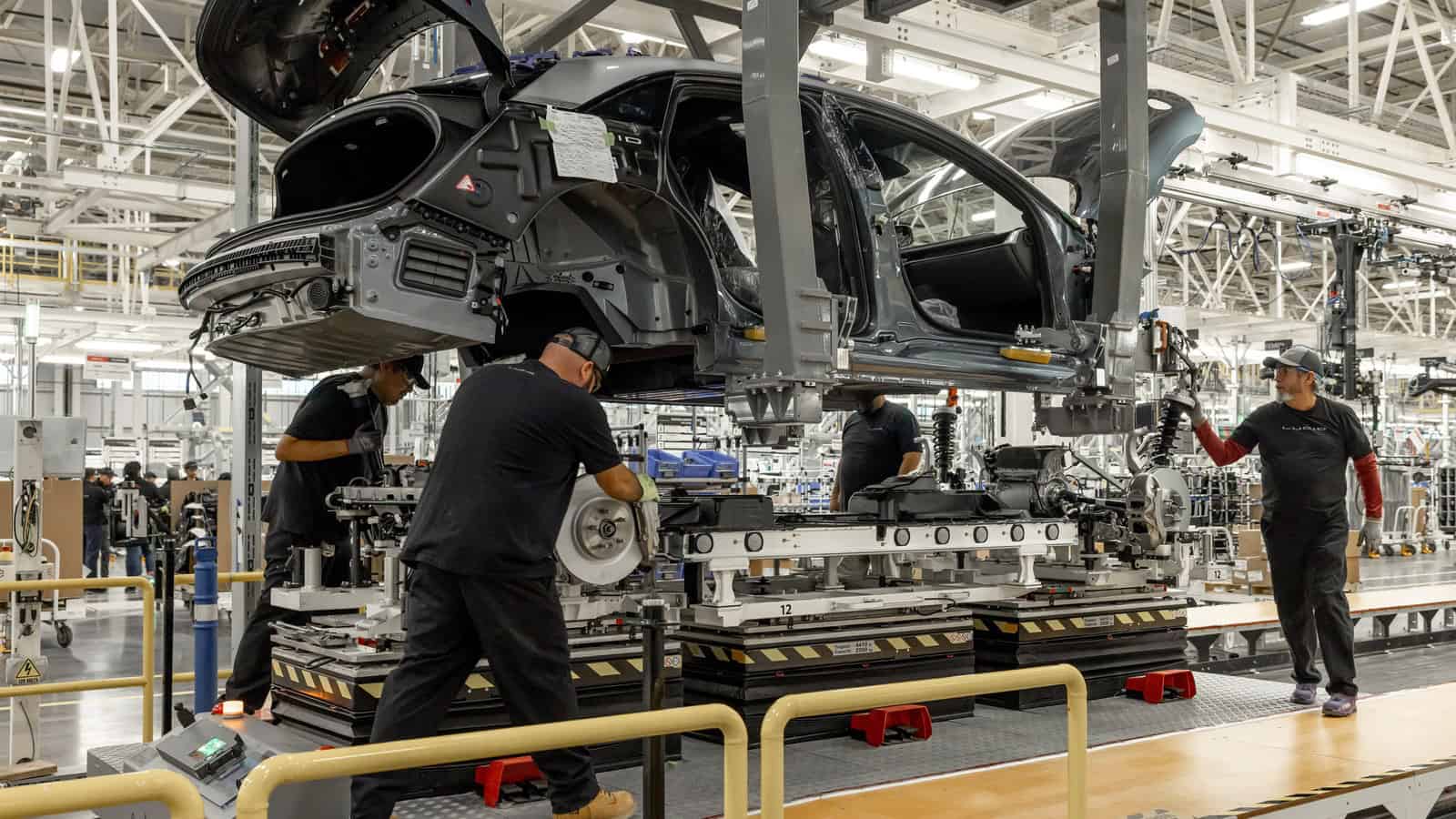
Lucid has already made one of the most energy-efficient cars on the market. Now the company is on a mission to strengthen supply chains for the critical materials powering its award-winning vehicles.
Supply chain warrior: The California-based electric vehicle manufacturer—whose 2025 Air Pure sedan is the first EV to achieve a milestone 5 miles of range per kilowatt of energy—recently reached an agreement with Alaskan mining exploration company Graphite One to purchase synthetic graphite for its vehicles’ battery packs.
- The deal, which goes into effect in 2028, is a crucial first step toward cementing a domestic supply chain of graphite, a mineral that makes up about half of every EV’s battery composition. EV batteries require both synthetic and natural graphite.
- “Today 100% of the graphite for batteries assembled in the U.S. comes from overseas,” said Lucid Motors Supply Chain Group Manager of Battery Raw Materials Michael Parton. “Building a robust domestic supply chain ensures the United States and Lucid will maintain technology leadership in this global race.”
Pandemic lesson: The global pandemic revealed the downside of depending on other nations for critical materials, and the importance of cultivating domestic sources instead.
- In 2020, “every company experienced major challenges when it came to shutdowns and global trade,” Parton said. “Having a domestic supply reduces production risk, accelerates response time and agility and lowers the need to carry higher levels of inventory.”
A midstream gap: When it comes to EV batteries and their supply chains, “much of the discussion is on localizing the bookends of the supply chain, the downstream battery production and the upstream mineral extraction,” Parton told us.
- Less discussed is the “midstream environment,” which comprises the precursor cathode active materials (P-CAM) and cathode active materials (CAM) stages. Materials used during these phases in the battery production process include critical minerals such as lithium, nickel and cobalt.
- The P-CAM market has been a difficult one to navigate, Parton added. For years, the P-CAM stage has been outsourced to countries with more cost-effective production. The problem: These countries also have less stringent environmental regulations than the U.S.
- “There’s limited investment announced [in the U.S.] in the refining and chemical conversion process at these stages, but it’s where the real need is,” Parton continued. “To promote localized sources of supply for mined and recycled minerals, there needs to be a domestic option for both P-CAM and CAM.”
A bipartisan issue: Lucid’s advocacy for a strong domestic supply chain has won bipartisan support in Congress.
- “There’s something in it for everyone when it comes to efficiency,” said Lucid Motors Senior Manager of International and Trade Policy Emily Patt, citing the environmental and self-sufficiency benefits of a resilient domestic supply chain.
What’s next: Lucid is expanding its vehicle lineup beyond the Air and the vehicle’s four trim levels.
- By the end of 2024, the company is scheduled to start production of the seven-passenger Lucid Gravity. The company has also teased an upcoming midsize platform, which is expected to start production in late 2026.
The grand vision: “The pursuit of efficiency drives Lucid as a company,” Patt said. “We’re not just making zero-emission cars; we’re committed to making the best use of the world’s resources to maximize the benefits for electrification and the planet.”
NAM: Clarify 30C Tax Credit Rulemaking

The “30C” tax credit has the potential to spur manufacturing investment, but the Internal Revenue Service and Treasury Department must first clarify some of their proposed rules regarding it, the NAM said this week.
What’s going on: In September, the IRS and Treasury Department jointly proposed regulations regarding Section 30C of the U.S. tax code’s Alternative Fuel Vehicle Refueling Property Tax Credit, which was changed and expanded by the Inflation Reduction Act of 2022.
- “A key purpose of the energy provisions of the IRA was to reduce greenhouse gas emissions and spur manufacturing investments in low emissions and renewable energy sectors,” NAM Vice President of Domestic Policy Chris Phalen told the IRS on Monday.
- “Manufacturers make vehicles that use alternative fueling stations, many of our members produce the components … that go into these stations and manufacturers will construct and operate these refueling properties. These companies require certainty and specificity to make final investment decisions.”
What must be done: To that end, the NAM told the agencies the following changes should be made to the proposed regulations for the 30C tax credit:
- Extend the allowed transition period for organizations to update “census tract designations to reflect population data in the years 2016–2020,” as the draft rulemaking mandates that those wishing to take advantage of the 30C credit “must place the property into service within a specific census tract designation.”
- Clarify whether the location of the refueling infrastructure “would need to be made available to the public to qualify for the 30C tax credit.”
- Provide tax credit “eligibility for certain property directly attributable to the operation of alternative fuel vehicle refueling property, such as electrical panels and conduit/wiring, and ask that the agency also consider related construction and other project costs for eligibility.”
NAM Sees Strength for Manufacturing as Washington Transitions
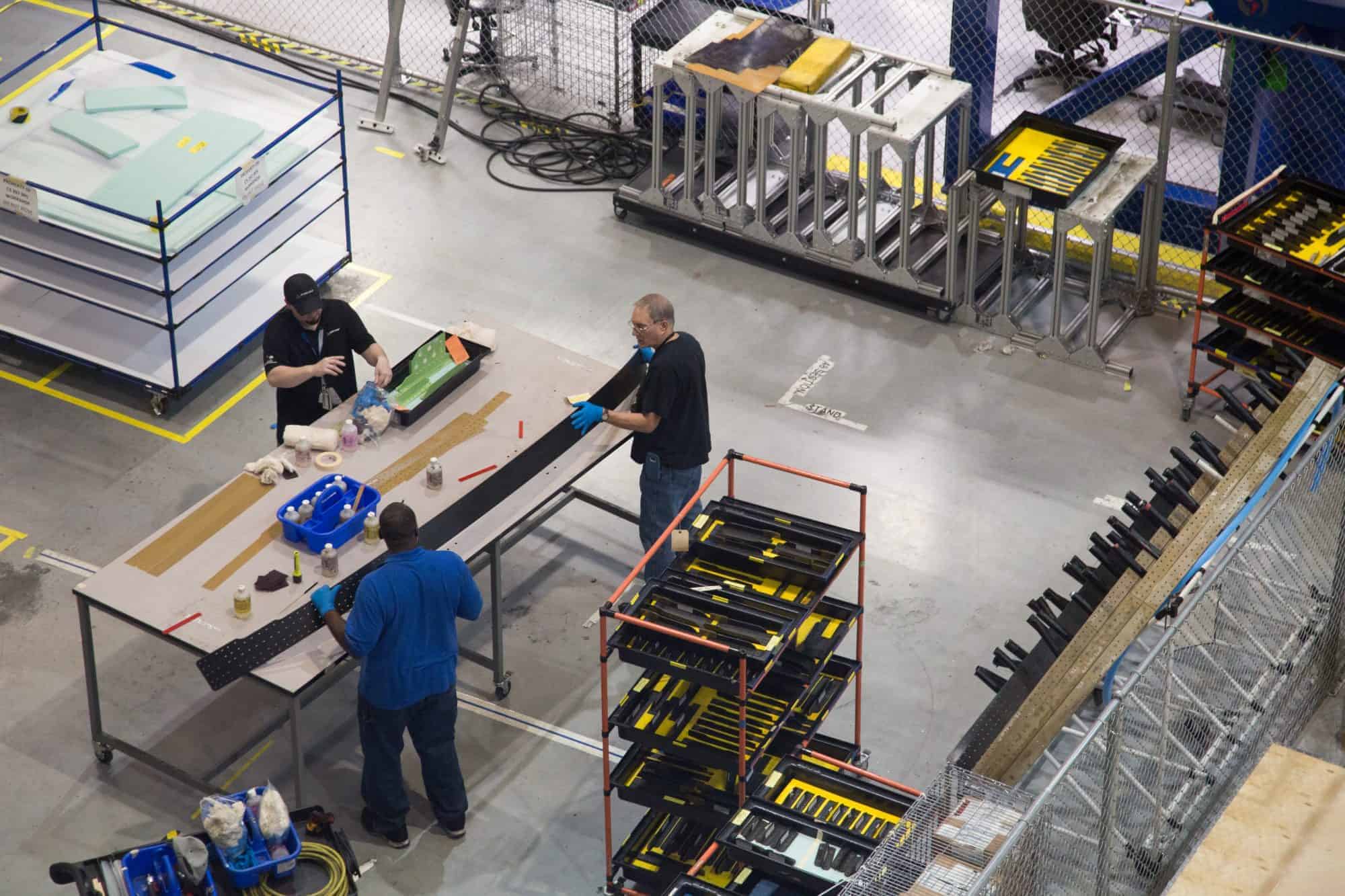
With a new administration and Congress on the horizon, the NAM is signaling confidence in its ability to secure wins for manufacturing in the United States, highlighting both recent achievements and policy priorities moving forward.
“The NAM has always focused on what’s best for manufacturing in America, and our track record speaks to that,” said NAM Executive Vice President Erin Streeter. “Our approach is consistent because we know what it takes to get results.”
What we’ve delivered: With post-partisan engagement, the NAM has achieved historic policy wins across both recent administrations, including:
- Tax reform: The NAM’s advocacy helped shape the 2017 tax cuts, driving billions in savings that manufacturers have reinvested in jobs, innovation and facility upgrades.
- Regulatory certainty: The NAM has played a pivotal role in streamlining regulations, reducing compliance costs under the Trump administration and working to slow regulatory expansion during the Biden years.
- United States-Mexico-Canada Agreement: The NAM was a key advocate for USMCA, safeguarding U.S. jobs by ensuring fairer competition and greater access to key markets.
- Energy advances: NAM-backed policies have supported growth in domestic energy production, creating a more stable energy market.
- Infrastructure and CHIPS Act: The NAM was instrumental in securing the historic Bipartisan Infrastructure Law and the CHIPS and Science Act, both critical for modernizing the economy, bolstering national security and ensuring a reliable semiconductor supply.
“These wins demonstrate what we bring to the table,” Streeter said. “By staying focused on manufacturing’s priorities, we can partner effectively with the new administration and Congress to create and protect jobs and strengthen communities.”
Looking ahead: The NAM’s focus on core issues remains critical for keeping the sector competitive and resilient, Streeter continued. These issues include:
- Securing tax reform: The NAM’s “Manufacturing Wins” campaign aims to lock in key 2017 tax provisions that manufacturers rely on for stability and growth. “Tax reform has been a game-changer,” said Streeter. “Protecting that progress means more jobs and manufacturing-led growth across the country.”
- Regulatory certainty: The NAM is advocating for balanced regulations that support competitiveness. “Manufacturers thrive with clear, fair rules,” Streeter noted. “We’re making sure Washington understands the importance of regulatory stability—and the danger of excessive regulation.”
- Energy security: The NAM is working to secure reliable, affordable energy while fostering innovation in sustainability. “Energy security and grid reliability are top of mind for every manufacturer,” Streeter added. “We’re ensuring manufacturers can continue to innovate, grow and drive America forward.”
Bottom line: The NAM remains focused on advocating for policies that strengthen U.S. manufacturing. “Our success is built on trust and influence,” Streeter said. “Our members know the NAM is a constant force, with the relationships and expertise to deliver, regardless of political changes.”
In related news, President-elect Trump has named campaign manager Susie Wiles as White House chief of staff (Reuters, subscription), a choice NAM President and CEO Jay Timmons called “a powerful move to bring bold, results-driven leadership to the White House from day one.”
